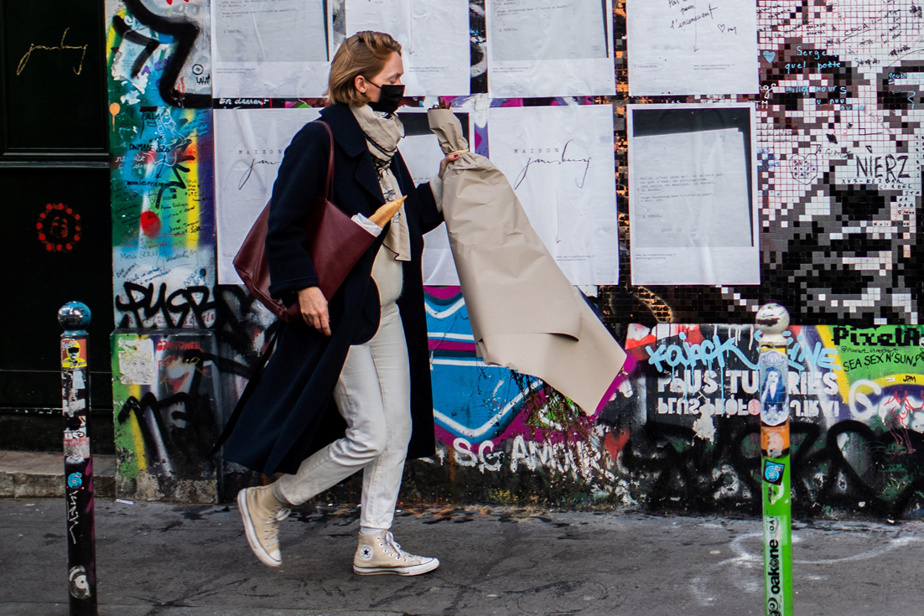(Paris) A pack of Gitanes on the table, naked women on the walls, a grand piano… Serge Gainsbourg’s house is pretty much as we imagined it, but even more. Thirty-two years after the singer’s death, nothing has changed at 5 bis, rue de Verneuil. As if time had stopped on March 2, 1991.
Charlotte Gainsbourg has long wanted to open her father’s home to the public. Apparently, he himself had mentioned this possibility. But for various reasons, the project was slow to see the light of day. It is now done. Since September, we can visit the place as if we were part of the family. A half-hour pilgrimage, to which is added the Gainsbourg museum, located just opposite, also recently inaugurated.
“Let me open the door for you,” she said, before leading us into the large room on the ground floor, where Serge was used to receiving and composing.
In the darkness, we first see the grand piano which sits in the middle of the room. Then, our eyes get used to it and we gradually discern the cabinet of curiosities that furnished his daily life. Police badges (which he collected), gold records, an organ, dozens of miscellaneous objects, a giant frame by Brigitte Bardot – with whom he planned to live in this house, acquired in 1968, and in where he eventually lived with Jane Birkin from 1969 until their separation in 1981.
But what is most striking is the fact that nothing has changed in 32 years. Here a packet of Gitanes and an ashtray full of cold cigarette butts. Further on, a briefcase placed on the floor, next to a broken sofa which retained the shape of his body. A telephone, newspapers. As if Serge had only left 10 minutes ago to go pour himself a drink. As if he was still alive.
Charlotte Gainsbourg wanted to keep the house intact. A way for her to preserve his memory and visit him even after his death. This is particularly striking in the small kitchen at the end of the ground floor, where jars of condiments sit alongside a beer in the fridge (the door is transparent) and empty bottles of wine, including a 1928 Château Haut-Brion, year of birth of the singer-songwriter.
The experience becomes even more surreal on the 2nd floor. In a tiny closet, his shirts and jackets hang above his eternal white slippers. Then we take the corridor. We pass the bathroom where, we learn, he only washed with a bidet. Finally ending up in the bedroom, where he loved… and where he died. “He had one leg sticking out of the sheets. We found him like that, Charlotte whispers into the headphones. We lay down next to him. Time has stopped. We had him embalmed so he could stay longer. Outside, people were singing I came to tell you that I’m leaving. »
Surprising, moreover, how small the place is. Far from a mansion, this old mansion is made of low ceilings and narrow corridors. The small size of the premises means that we cannot all be there at the same time. Unlike Elvis’s house, which we visit in a herd, we enter here slowly, with the impression of being almost alone. Sensation of intimacy, reinforced by all these black painted walls and these windows with closed shutters, which envelop us or oppress us, it depends. Gainsbourg lived at night, even during the day…
After this intense closed session, we are inevitably less affected by the museum located on the other side of the street, more predictable, where we follow the singer’s career in a long corridor of eight stations. However, there are many treasures to see, between song manuscripts, old 45s, personal objects and sometimes extremely rare archive films. Not to mention the statue of the cabbage-headed man, made famous thanks to the album of the same name, which gazes at us from the end of the corridor.
It all ends – not without humor – at the aptly named Gainsbar, a chic lounge in homage to the singer where you can sip his favorite cocktails, the “Serge 78”, the “Fameux Gibson” or the “Pastis 102” ( or a double pastis 51). A bit of a tourist trap, but a good escape hatch, after our experience.
A few French artists, including Eddy Mitchell and Étienne Daho, have expressed opposition to the project. But for admirers of Gainsbourg, this pilgrimage is absolutely essential. Emotionally powerful. As Michel, a Belgian fan we met outside, puts it so well: “We don’t leave here in the same state as when we entered. »
The Gainsbourg house has enjoyed phenomenal success with the general public. We were full even before opening, and all the slots already posted are taken. We suggest subscribing to the newsletter to be informed of new schedules.
